What is a good CTR for Google Ads? Are your ads measuring up?
PPC ads are a vital part of any eCommerce digital marketing strategy. However, it can be disheartening to spend time and money on Google Ads, only to find they’re not generating the traffic or sales you expected them to.
If you want to see better results from your Google Ads, you need to improve your CTR (click-through rate). But first, it helps to know what a good click-through rate is so you can accurately evaluate the performance of your ads.
In this article, we’ll share what is a good CTR rate for Google Ads. Plus, if you find your Google Ads CTR to be on the low side, we’ll share tips on how to improve it.
- Google Ads Click-Through Rate Basics
- What Is a Good CTR for Google Ads?
- Factors That Affect Your Google Ad CTR
- How to Improve CTR for Google Ads
- Make the Most of Your Google Ad Traffic
Google Ads Click-Through Rate Basics
Before we find out what click-through rate you should be aiming for, let’s start with the basics.
What Is a Click-Through Rate?
Click-through rate (CTR) is simply the ratio of people who click on your Google Ad when they see it.
You can calculate your CTR by taking the number of clicks that your Google Ad gets and dividing it by the number of times your ad is shown, like this:

For example, if your ad gets 5 clicks and 100 impressions, then your CTR would be 5%.
Related Content: How to Boost the ROI of PPC Campaigns With Targeted Optins
Figuring out your CTR is important because it lets you see how well your ads are performing. If your CTR is good, it shows that your Google Ads are helpful and relevant. But, if your click-through rates are low, then your time, money, and efforts are going to waste.
Here’s how to link Google Ads to Google Analytics to track your ad campaigns better.
Your CTR will vary depending on which networks you use to place your ads. There are 2 Google networks you can use to place ads. This article is going to mostly focus on ads for the Search Network, but I’ll briefly go over both.
The Search Network
With the Search Network, your ad shows when a user searches for terms related to your keywords.
For instance, if a user searches Google for “hiking boots,” ads with those keywords will display at the top of search results with a “Sponsored” label above each one:
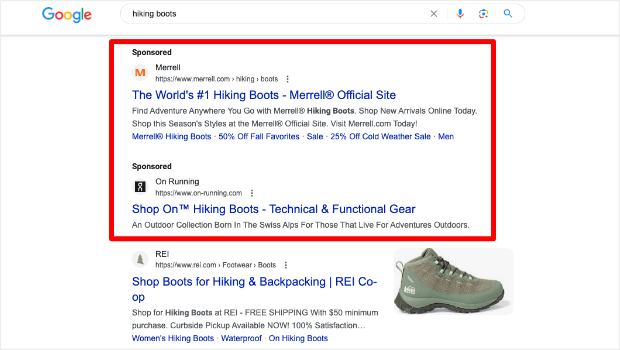
Click-through rates for the Search Network are typically higher because your ads are relevant to what the user is searching for.
Related Content: Remarketing Lists for Search Ads: Custom Campaigns and Tailored Bids
The Display Network
On the other hand, with the Display Network, you can show ads on websites or apps that users are browsing, like in the image below.
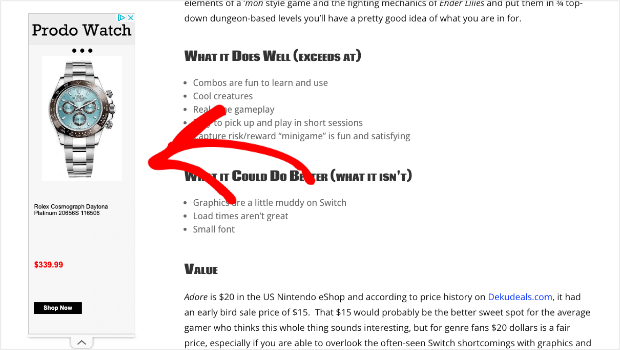
These Display Ads can appear on any of the millions of websites that use Google AdSense for revenue. Users might see your ad on a particular website because the content is relevant to your keywords or because you’re retargeting previous visitors to your website.
Since these users aren’t actively searching for your keywords on the web, they’re less likely to click on a Display Network ad. Therefore, CTR is generally lower for the Display Network, as you’ll see below.
Related Content: Google Display Retargeting Ads: A Budget-Friendly Google Ads Option
Now that you’re more familiar with click-through rates for Google Ads, let’s find out what a good CTR rate is.
What Is a Good CTR for Google Ads?
A good click-through rate (CTR) for Google Ads typically ranges from 7% to 9%, depending on your industry. Let’s take a closer look.
According to WordStream/LocaliQ’s 2023 Google Ads Benchmarks (PDF) report, the average click-through rate for Google search ads is 6.11% across all industries.
The current CTR for Google display ads is more difficult to find, as LocaliQ no longer tracks that metric. Their 2018 data showed an average CTR of 0.46% for Google display ads, compared to 3.17% for search ads during that same year.
We can pull 2 important conclusions from this data:
- The CTR for Google search ads has increased drastically over the last 6 years.
- The CTR for Google display ads is much lower than for search ads.
What defines a good CTR for your industry? Here’s a breakdown of search ad CTR for 23 different industries in 2023:
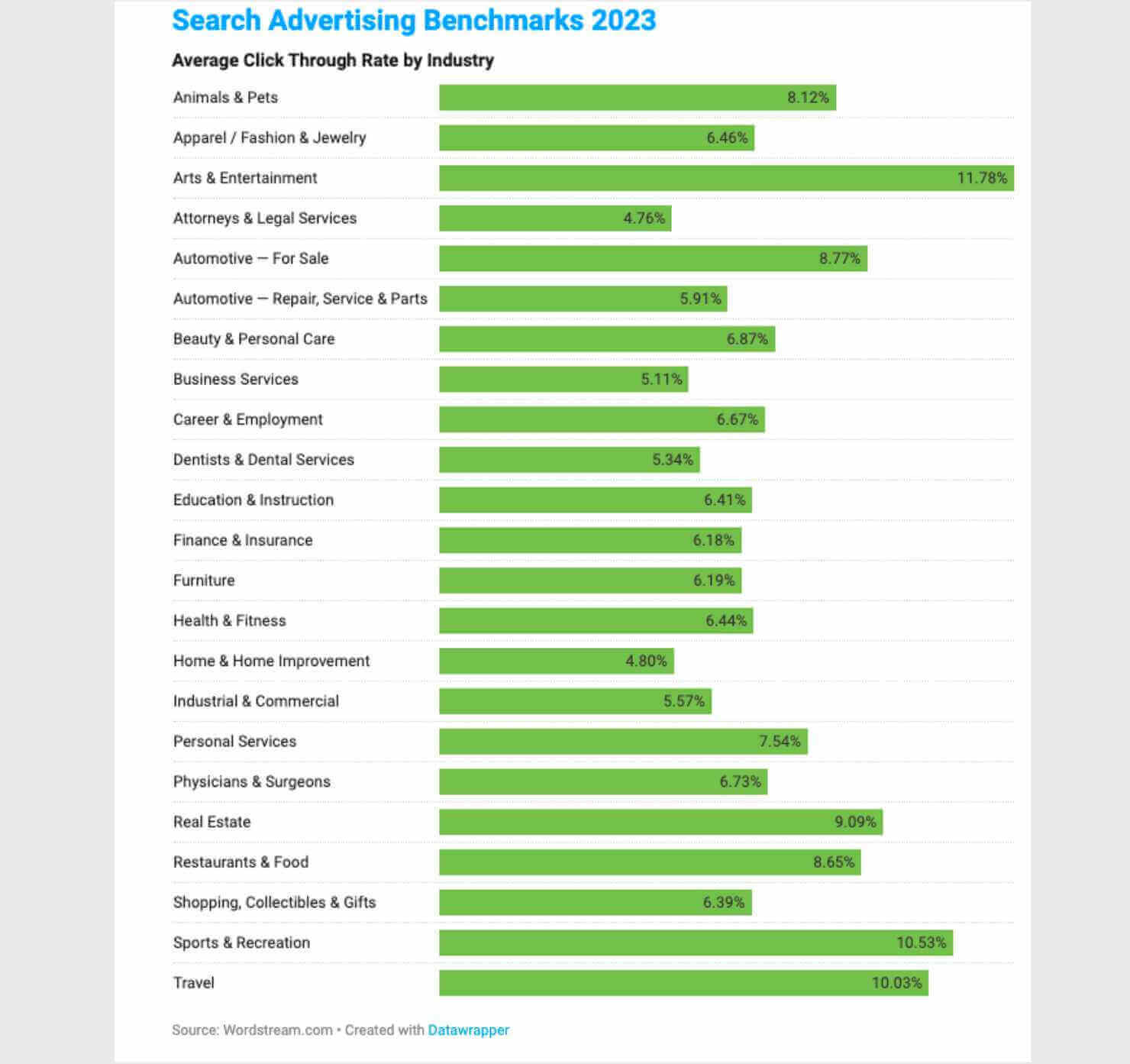
The average CTR varies from 4.76% for Attorneys & Legal Services all the way to 11.78% for Arts & Entertainment.
However, different studies also show very different CTR averages. For instance, 2024 data from FirstPageSage says the average CTR for a #1-ranking search ad is 2-6%. They also list the average display ad CTR as 0.089%.
So, what is a good CTR for Google Ads? It’s complicated. If your click-through rate is well below the industry average, you have plenty of room for improvement.
And, even if you’re meeting industry standards, you can still take steps to get a higher CTR to generate even more leads and sales.
Want to boost your lead generation the quick and easy way? Sign up for OptinMonster today!
Before trying to improve click-through rate, let’s talk about the factors that affect it.
Factors That Affect Your Click-Through Rate
Your click-through rate isn’t up to chance. Instead, a number of elements help determine whether your ad gets a lot of clicks or whether it’s ignored.
Here are some of the factors that can affect it:
Ad Position
When a user searches on Google for their keywords, the search results will potentially include several relevant ads at the top of each page.
Since the #1 spot is the first ad that users see, it gets the most clicks out of them all. 2024 Google Ad data from FirstPageSage shows that the higher your ad is ranked in search engine results, the higher your CTR:
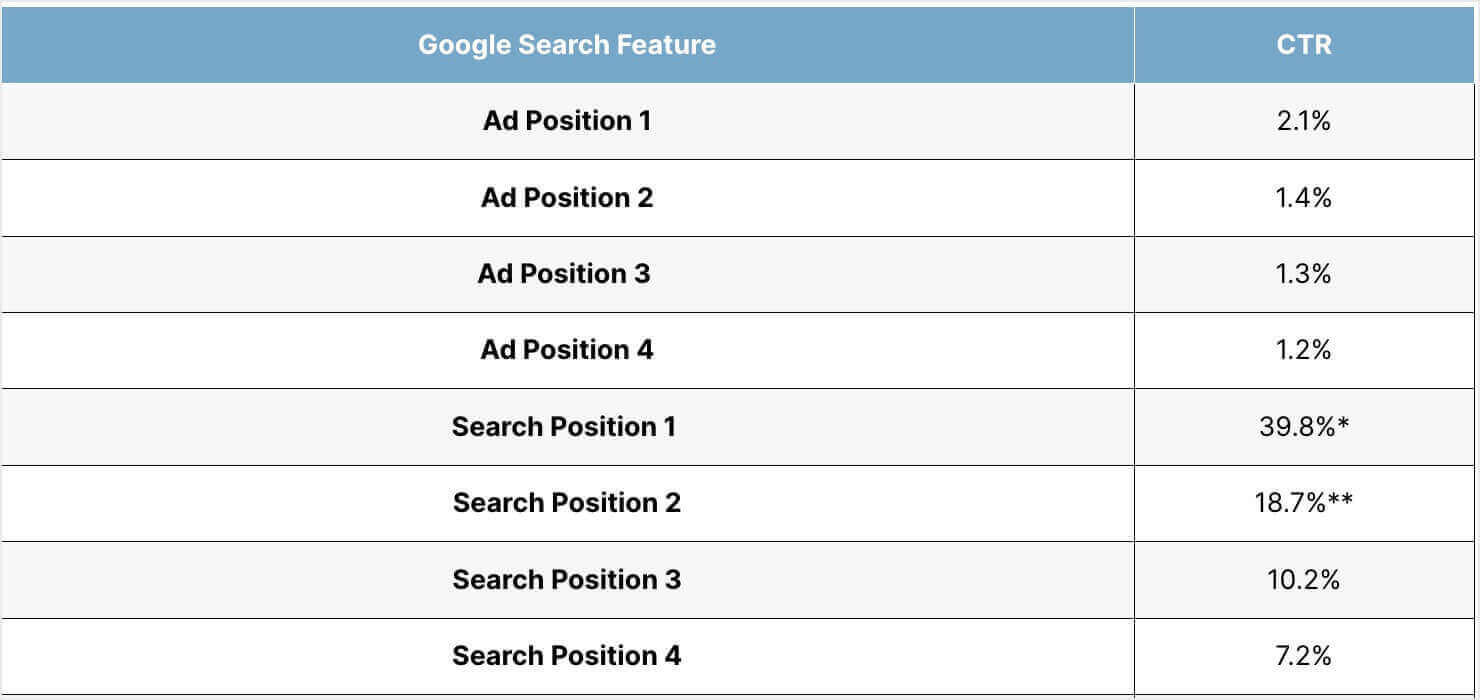
Headline and Copy
Your CTR also depends on the effectiveness of the messaging in your Google Ad. Your ad headline and copy need to stand out and encourage users to click.
Related Content: 21 Viral Headline Examples and How You Can Copy Their Success
To provide an example, I did a quick Google for “bridesmaid dresses” The top-ranking ad was from the bridal apparel company Azazie:

Their headline focuses on the affordability of their bridesmaid dresses, which start at $79. The descriptive text highlights their try-before-you-buy service and the 500+ styles available. Their ad also includes a photo of one of their dresses.
When you give users solid information about why they should choose your company, they’ll be more likely to click on your ad.
Ad Relevance
Users are more likely to click on an ad that’s relevant to their search queries and interests.
If you want your ad to reach users who are interested in your products, then you need to include relevant keywords in your ad.
An ad that has the users’ relevant keywords within the headline and copy will get more clicks than a generic ad.
How to Improve Click-Through Rate for Google Ads
If your click-through rate leaves something to be desired, check out these tips for getting a high CTR for your Google Ads.
1. Include a Special Deal in Your Headline
People are drawn to great deals like moths to a flame. So, if you want to improve a low CTR, add a special deal in your headline.
For instance, check out this Google Ad from Bed Bath & Beyond.

Users will be more likely to click on this ad that offers 70% off versus a similar ad that doesn’t offer any savings.
2. Write Higher-Converting Ad Copy
Now it’s time to bust out your writing skills. You need to start writing higher-converting ad copy to improve your CTR. Thankfully, you don’t have to be an expert writer. Instead, you just need to practice these simple tips.
Add a Strong Call-to-Action
You need to persuade users to click your ad by adding strong calls-to-action (CTAs) like “Buy Now,” “Learn More,” “Get Started,” etc.
Use Power Words:
Power words like “You,” “Now,” “Best,” and “Find” are good at convincing users to engage with your business.
Solve Customers’ Problems:
Think about the user’s point of view. When they search for your keywords, what problems are they hoping to solve? Clearly state how you can solve those problems, like Neutrogena does in this Google Ad:

I got this ad after searching for “acne treatment.” The ad uses phrases like “Tackle Your Acne Concerns” and “Less Acne Marks in 1 Week” to explicitly promise to address the customer’s problems.
3. Link Ads to Relevant Landing Pages
This tip can not only boost CTR but can also improve your conversion rates after users click your ad.
When someone clicks on your Google Ad, they should be taken to a page on your website that matches what they’re looking for.
Earlier, I showed you a Google Ad from Azazie. The ad was for their bridesmaid dresses, so when I clicked the link, I was taken specifically to the bridesmaid dress section of their site:
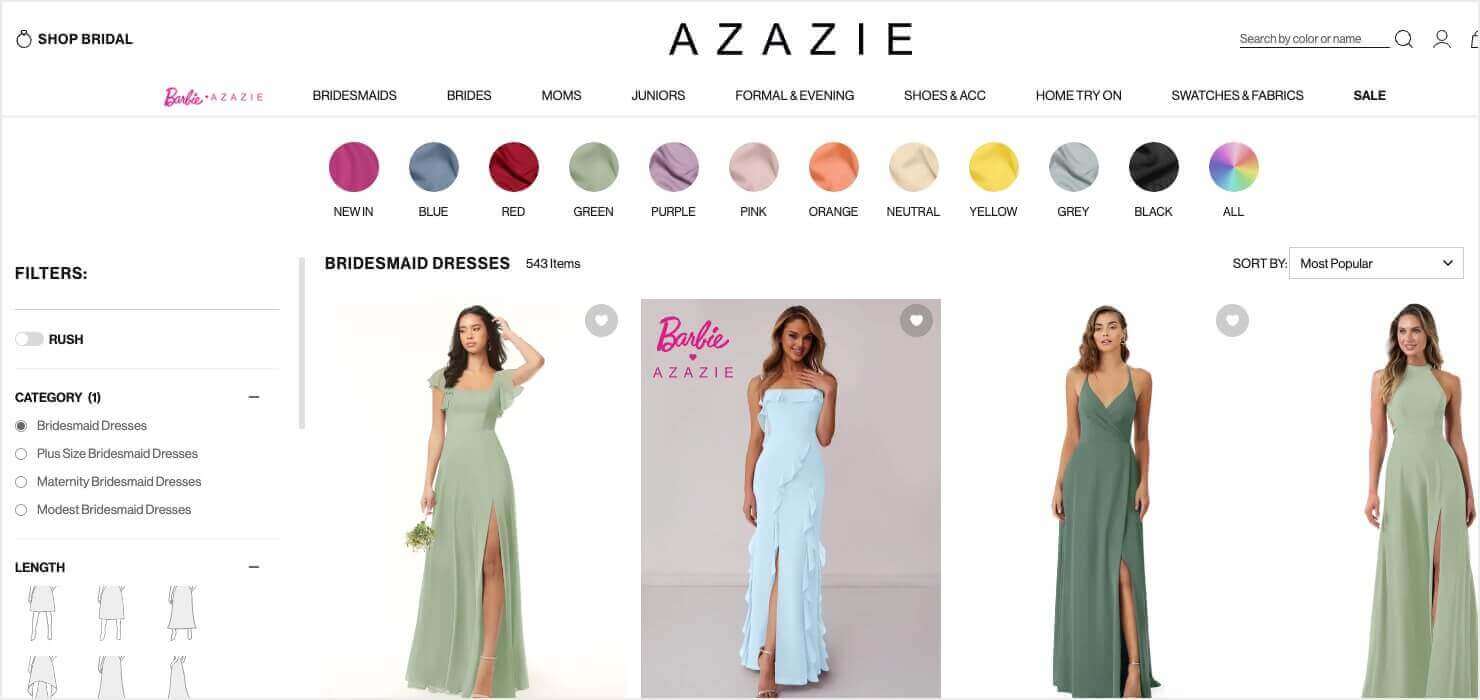
Azazie also sells wedding dresses, shoes, accessories, and other formal apparel. But this ad was targeted to people searching for “bridesmaid dresses.” Therefore, the ad needed to link to that section of their site, rather than just their homepage.
So, make sure your Google Ad leads to a relevant landing page, sales page, or product page, so youre target audience finds the exact products they’re seeking.
4. Use Detailed Audience Targeting
If your ad isn’t being seen by your target audience, it’s not going to get any clicks. That’s why it’s important to use detailed audience targeting for your Google Ads campaigns.
Detailed audience targeting lets you be more accurate when choosing who sees your ads. With Google Ads, you can target remarketing lists, custom combination lists, life events, and interest categories.

For instance, if you want to create a Google Ad for your personal training business, you can target users who are interested in fitness.
You can dramatically increase your CTR by putting your ads in front of the users that are most likely to buy from you.
6. Take Advantage of Ad Extensions
Google Ads are quite small, which means you don’t have a lot of space to try and sell your business. But, with Ad extensions, you can increase the size of your Google Ads and give yourself more room to work with. This means you can make your ads more relevant to users, and they’ll stand out from the crowd.
There are a number of different types of Ad extensions you can take advantage of, here are a few examples:
Location Extension:
The location extension lets you add an extra line at the bottom of your Google Ad that displays your business’s physical address.
Did you knowYou can target visitors to your site using OptinMonster’s geo-location targeting feature. Our customer Skates.co.uk increased daily sales by £2000 just by using geotargeting. Check it out!
Call Extensions:
With call extensions, you can show your business phone number on your Google Ad. On mobile, users can simply click on your ad to make a call to you.
Sitelink Extensions:
Sitelink extensions let you link people to other specific pages of your website. This lets you show the user more of what you offer, making the ad more relevant to their needs.
In the Zoho ad below, the company links to pages for their Forever Free Plan, their Features, and their Integrations:
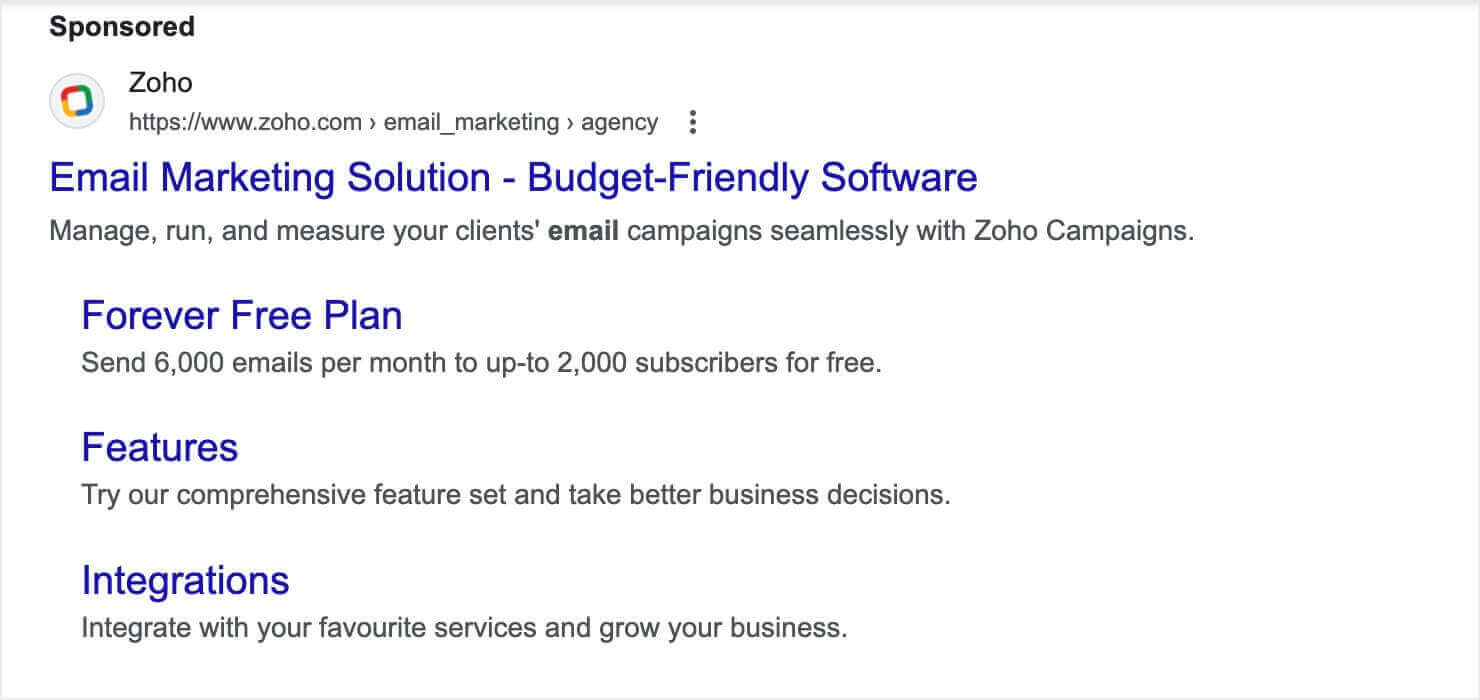
Sitelinks are a great option if there are multiple pages that are relevant to the search query.
7. A/B Test Your Ads
You may have heard about A/B testing, also known as split testing, for websites and email marketing. These tests let you try out 2 or more different versions of a webpage or email campaign to see which version performs better.
In Google Ads, split tests are called custom experiments.
With these testing features, you can determine which headlines, copy, images, and extensions get the highest CTR. Then, you can end your experiment and run the most effective version of your ad.
8. Improve Your Quality Score
In your Google Ads account, you can view the Quality Score of your ad groups. Ultimately, this score plays a huge role in how your ad ranks.
If you’ve implemented all of the tips above, you should have a solid score. However, continue to refine and tweak your ads to see if you can bring it up even more.
Make the Most of Your Google Ad Traffic
What is a good CTR for Google Ads? A good Google Ads CTR is one that matches up with your industry’s benchmarks and succeeds in driving new leads to your website.
Of course, paid ads aren’t the only way to reach your target audience. You also need to focus on your website’s SEO (search engine optimization). Here are a few resources to help:
- Beginner’s SEO Guide: Learn the Basics & Most Important Tips
- Cracking the Code: Unveiling 10 Powerful SEO Ranking Factors
- 15 SEO Tips to Boost Your Traffic & Rankings
- White Hat vs. Black Hat SEO: How to NOT do SEO
Once you have all this new traffic coming to your site, you need to take advantage of it.
OptinMonster is the best tool available to convert your website traffic into leads and sales.
With our popups, floating bars, inline forms, and other onsite marketing campaigns, you can:
- Use lead magnets to grow your email list
- Offer relevant deals and offers to each visitor with page-level targeting
- Reduce cart abandonment with Exit-Intent® popups
And that’s just the beginning!
Shockbyte doubled their sales with a single, extremely simple exit popup from OptinMonster:

And PodBike converted 18.22% of visitors into email subscribers with geotargeted campaigns.
If you want to see these kinds of results for your business, try OptinMonster!

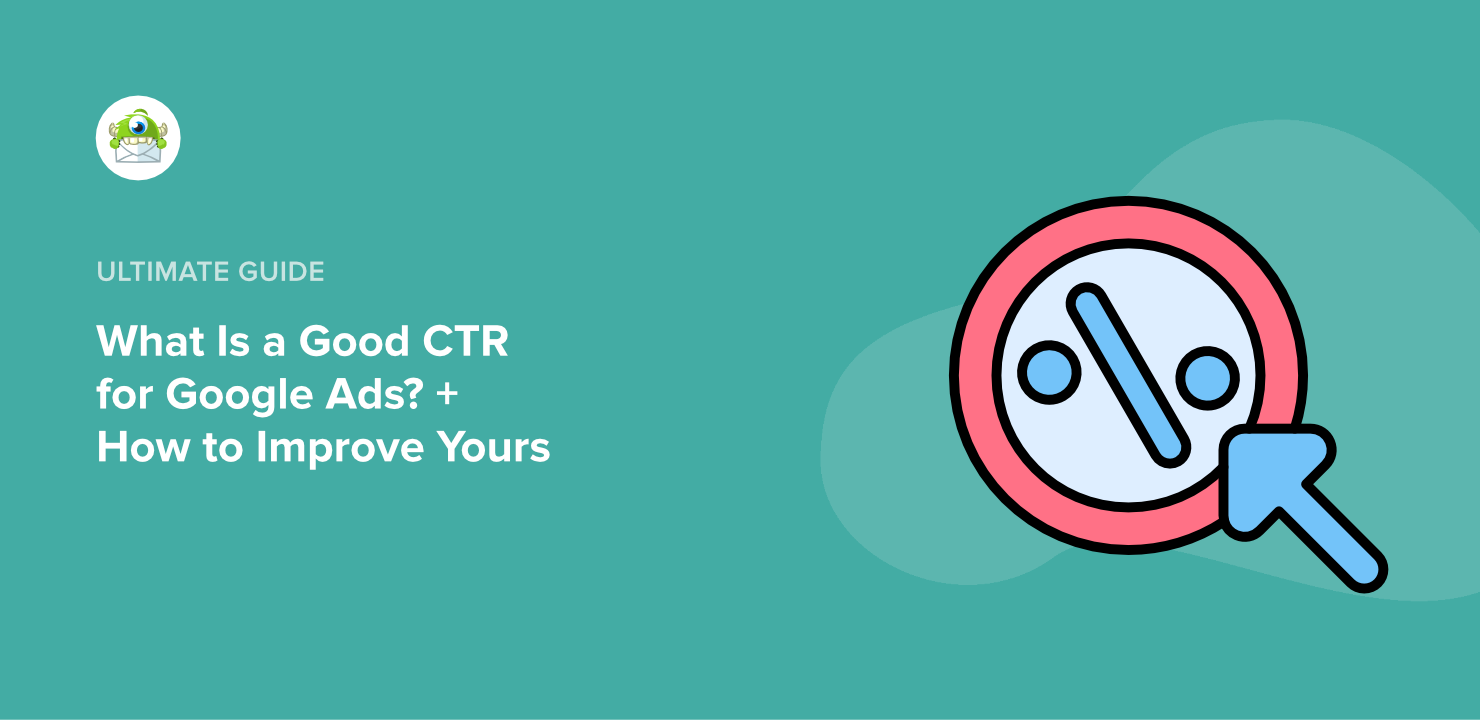









Add a Comment